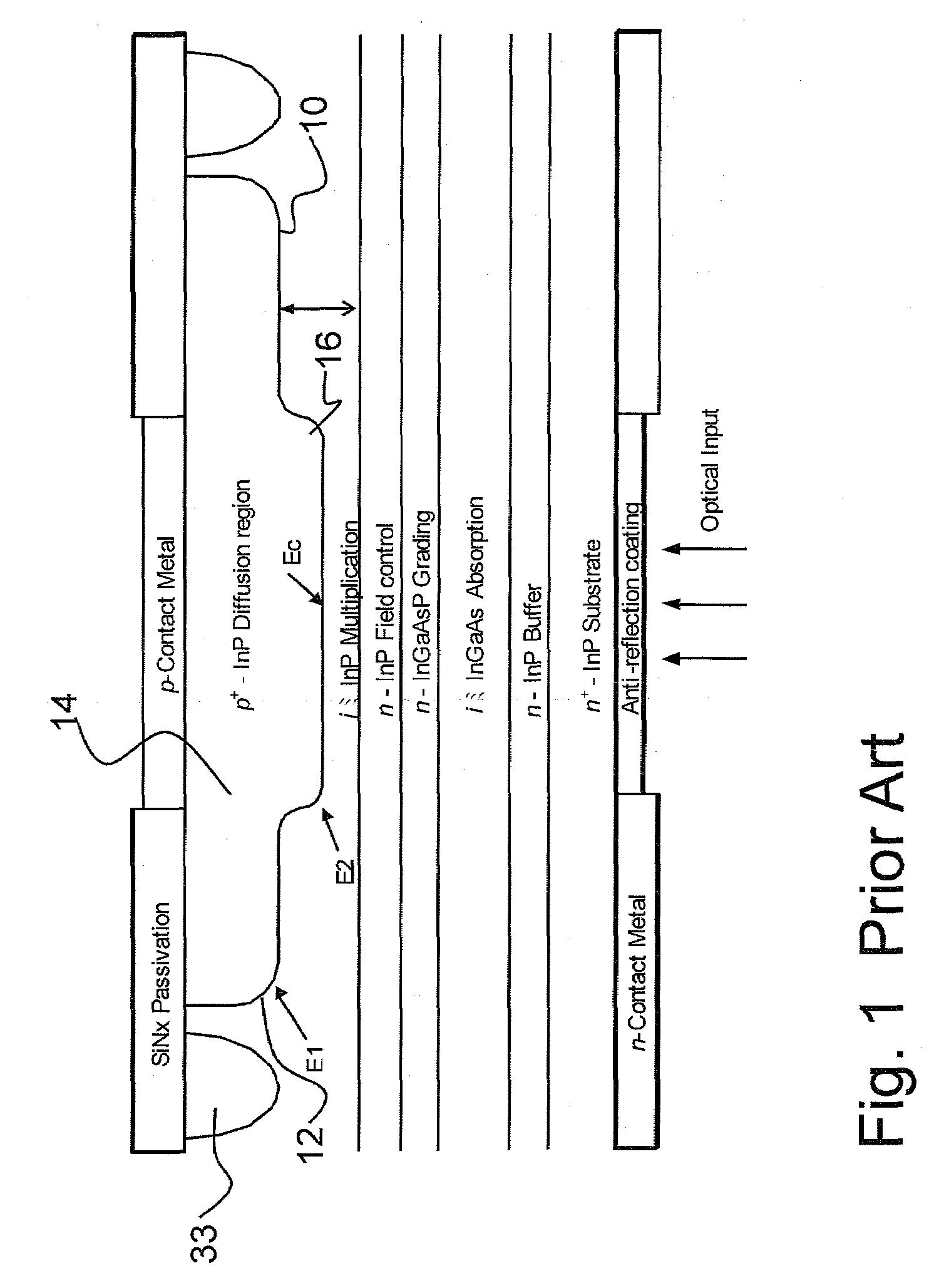Avalanche Photodiode With Edge Breakdown Suppression
a photodiode and edge technology, applied in the field ofavalanche photodiodes, can solve the problems of poor gain uniformity and premature breakdown, small design window, and large noise performance and bandwidth of apd, and achieve the effect of preventing the introduction of new dopants, enhancing gain uniformity, and reducing nois
- Summary
- Abstract
- Description
- Claims
- Application Information
AI Technical Summary
Benefits of technology
Problems solved by technology
Method used
Image
Examples
Embodiment Construction
[0046]The present invention provides an SAM-APD having an avalanche multiplication structure to suppress edge breakdown. The schematic structure is shown in FIG. 2. The APD 100 has a separate absorption and multiplication (SAM) structure. The SAM structure is grown on n-doped InP substrate 102. A typical SAM layer structure consists of an n-doped InP buffer layer 104 (0.3-1 μm), an unintentionally doped InGaAs absorption layer 106 (0.4-2 μm), a GaInAsP grading layer 108 (0.05-0.2 μm), an n-doped InP field control layer 110 and an unintentionally doped InP multiplication layer 112. The multiplication layer 112 includes the p-n junction 114 at the diffusion profile formed by Zn diffusion. A thin InGaAs layer slab 120 is grown on InP multiplication layer 112. The thickness of this InGaAs slab layer 120 is in the range of 0.05-0.5 μm. It can be unintentionally doped or heavily doped with p-type dopant such as Zn. The multiplication layer 112, active region 116 and guard rings 33 are enc...
PUM
 Login to View More
Login to View More Abstract
Description
Claims
Application Information
 Login to View More
Login to View More - R&D
- Intellectual Property
- Life Sciences
- Materials
- Tech Scout
- Unparalleled Data Quality
- Higher Quality Content
- 60% Fewer Hallucinations
Browse by: Latest US Patents, China's latest patents, Technical Efficacy Thesaurus, Application Domain, Technology Topic, Popular Technical Reports.
© 2025 PatSnap. All rights reserved.Legal|Privacy policy|Modern Slavery Act Transparency Statement|Sitemap|About US| Contact US: help@patsnap.com



